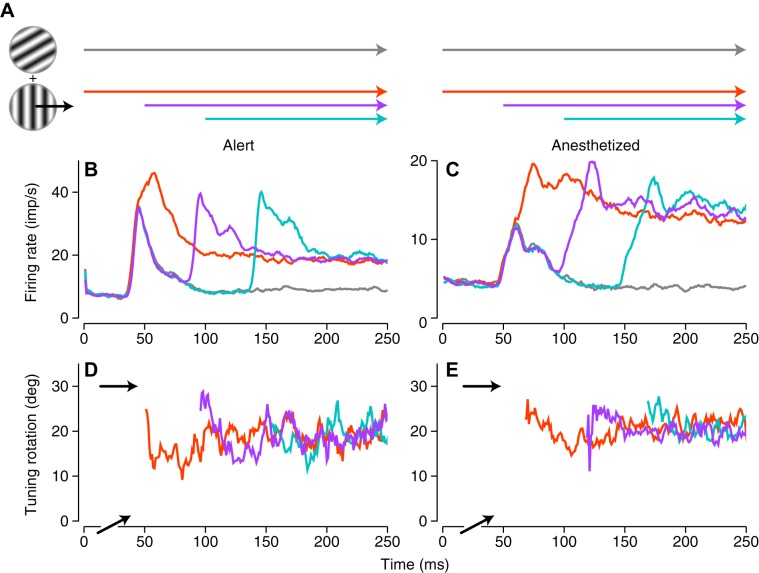Fig. 5.
Time course of responses and tuning preferences for asynchronously presented compound stimuli. A: experimental design. At the start of all trials, we introduced a static grating (gray arrow). For trials with compound stimuli, we added a moving grating with an orientation 60° different from the static grating either synchronously (red) or with a delay of 50 or 100 ms (blue or cyan, respectively). B and C: mean firing rates evoked by optimal single gratings and plaids containing those gratings for 121 cells from the alert animal (B) and for 84 cells from the anesthetized animal (C) for the 4 stimulus conditions schematized in A, computed at 1-ms intervals within a 5-ms sliding window. D and E: mean direction tuning to moving stimuli for the neuronal populations (alert, D; anesthetized, E). We rotated the tuning data for all neurons so that the preferred direction for single gratings was aligned at horizontal (indicated as 30°) and estimated the population preferred direction within the same 5-ms sliding window. The preferred direction is plotted only for times past the time at which the estimate for each stimulus had stabilized.

